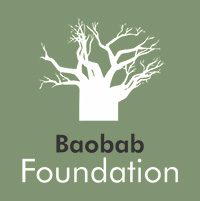At the end of 2020, we planted the last 9 baobab trees.
This brings the total number of trees planted as part of our Baobab Guardians program to 101 although we had initially aimed at 100. The extra 1 was due to one of the enthusiastic neighbours in Dambale village who also wanted to have a tree to take care of :-). We think 101 baobab trees has a nice ring to it!
The planting was well timed as we have not had rain for months and on the day following planting, the rain came and stayed for two solid days. While this is of course wonderful for the trees, it’s also great for the people who live in the area, as many rely on dry-land crop production such as millet and sorghum.
Three of the trees were sponsored by UnRooted, a stunning brand of baobab drinks that retails in the UK. Nathan Clemes, one of the owners and founders of the brand, is passionate about baobabs and he’s a keen supporter of our Baobab Guardians project. Annah Khorombi is one of the older women in the village and you will see in the photos how her whole family participated in the the tree planting, including her children, children in law and grandchildren.

Another two trees were sponsored by Lather who have been sponsoring Baobab Guardians since November 2017. Lather have so far sponsored 27 trees and now have trees in three different villages.
The remaining 4 trees were sponsored by individual contributions.
What happens When We Plant Baobab Seedlings?
We started the day with a Baobab and Tree Care Workshop run by Sam Nephiphidi. Sam is a retired Community Forester who used to work for the Department of Forestry. His experience and knowledge of how to grow trees and look after them is excellent and he is very good at getting information about this across to rural people.
Each person in the workshop received a copy of the “Little Big Baobab Book” (in Venda it is called “Bugu Thukhu Ya Muvhuyu Muhulu”). They were also taught how to use a large plastic cool drink bottle for drip irrigation. First the bottle is pierced with a number of small holes and then it is buried next to the newly planted seedling with just the shoulders of the bottle and the lid protruding above soil level.
The area is very dry with a very low rainfall and the soils are sandy, so using a plastic bottle to drip feed to the roots of the baobab tree is a really good way to keep them well-watered.

What’s Next?
The work does not end here. Although we’ve planted the last of 101 trees as part of the project, only 28 have so far reached their 3 meter height when they are mature enough not to require human care and protection. That means there are still 73 trees dotted around the villages that I will be visiting twice a year to take their measurements and photographs. This will go on for another 3 – 4 years until all trees have reached 3 meters in height.


